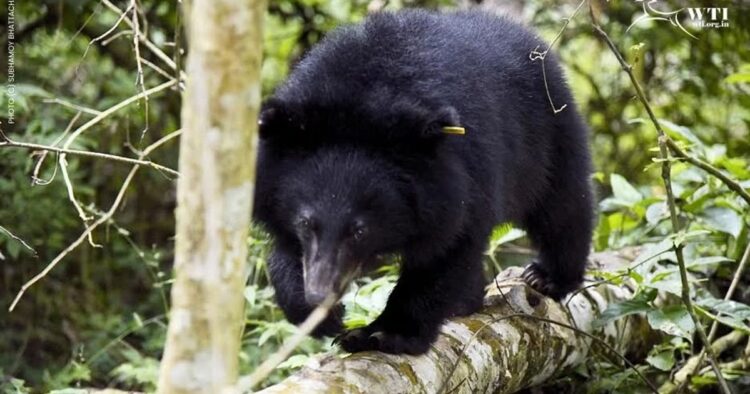A survey has begun in Arunachal Pradesh’s Pakke Tiger Reserve to assess the population of Asiatic black bears. This survey marks the first attempt to gauge the status of Asiatic black bears released in the reserve forest after undergoing rehabilitation at the Centre for Bear Rehabilitation and Conservation -CBRC, officials reported.
Established in 2002 through collaboration among the Arunachal Pradesh Forest Department, International Fund for Animal Welfare or IFAW, and Wildlife Trust of India-WTI, the CBRC focuses on rehabilitating displaced bear cubs back into their natural habitat.
The ongoing survey, supported by the Ministry of Environment and Forests or MoEF and conducted in partnership with the WTI, involves preliminary sign surveys and camera trapping.
The 20-member team has already conducted three preliminary sign surveys in Rilloh, Nyargoka, and Delang ranges, and the helipad ground route. The final survey, along with camera trapping, commenced on Tuesday. It will continue until March.
Pakke Wildlife Sanctuary and Tiger Reserve Divisional Forest Officer Satyaprakash Singh emphasized the success of the CBRC’s rehabilitation efforts will be assessed through this comprehensive survey.
WTI manager and CBRC head Dr Panjit Basumatary highlighted the study aims to provide valuable insights into the bear population, habitat preferences, and occupancy patterns, utilizing advanced methods based on occupancy analysis.
The survey covers an elevation range from 900 meters to up to 2,000 meters above sea level, providing a holistic understanding of the Asiatic black bear population in the Pakke landscape.
The results are expected to contribute significantly to conservation efforts and may serve as a model for similar initiatives in other landscapes of Arunachal Pradesh and other States.

















Comments